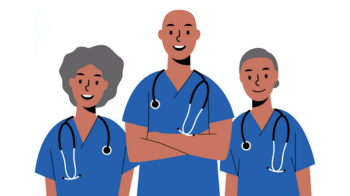What is a chyle leak?
Chyle is a milky substance which is normally carried around the body in the lymphatic system. A chyle leak happens when surgery or injury causes damage to a lymphatic duct. Chyle collects in different parts of the body such as the chest or abdomen causing swelling.
Chyle is made up of fats, proteins, and other important nutrients. If a chyle leak is left untreated it could lead to large nutritional losses. Chyle leaks may require drainage or surgical repair if the leak cannot be managed by diet alone.
Nutritional management of chyle leak
The aim of dietary management is to reduce the flow of chyle to allow the damaged lymphatic duct to heal. A low-fat diet contains less than 10g total fat per day. Food labelling will help you calculate this.
Altering the fat content of your diet can significantly reduce lymphatic flow of chyle. Most of the fat in the diet is from Long Chain Triglycerides (LCT). Keeping LCT to a minimum will reduce chyle production.
Focus on Medium Chain Triglycerides (MCT) instead as these fats are absorbed directly into the bloodstream and do not trigger lymphatic flow. It is important to eat MCT fats to make sure you get enough calories.
The aim is to keep LCT fats low whilst eating enough MCT to meet your nutritional needs and maintain weight.
This is a temporary diet. If following a low-fat diet for more than two weeks you should take a multivitamin tablet daily. One teaspoon of sunflower or walnut oil should be consumed daily to make sure you have enough omega 3 and 6. This will contain fat but is fine while following this diet.
Foods you can eat and foods to avoid
| Food type | Food allowed | Food to avoid |
|---|---|---|
Carbohydrates (pasta, flour, bread, potatoes, cereals, rice) |
|
|
| Fats and oils |
|
|
| Fruit |
|
|
| Vegetables |
|
|
| Protein (meat, fish, poultry, meat alternatives, beans and pulses) |
|
|
| Dairy products |
|
|
| Desserts and confectionary |
|
|
| Sauces |
|
|
| Miscellaneous |
|
|
| Drinks |
|
|
Food labels
Choose foods which are less than 0.5g of fat per serving. Remember that most of the fat in the diet is LCT and this will be called “total fat” on the nutrition label. Be aware of the portion size on the plate, it could be different to the suggested serving size on the label.
Meal ideas for in hospital
If you are an inpatient, request a review with a Dietitian to discuss the choices from the menu.
(The menu is changed twice a year).
Meal ideas for home
| Meal | Options (from the allowed list) |
|---|---|
| Breakfast |
|
| Lunch |
|
| Dinner |
|
| Dessert |
|
| Snacks |
|
Milk alternatives
| Type | kcal/100mls | Fat/100mls |
|---|---|---|
| Oat milk | 50 | 2.1 |
| Rice milk | 50 | 1.0 |
| Potato milk | 57 | 3.0 |
| Soy milk | 39 | 1.8 |
| Coconut milk | 20 | 0.9 |
| Pea milk | 35 | 0.9 |
| Almond milk | 22 | 1.1 |
| Cashew milk | 23 | 1,1 |
| Peanut milk | 25 | 1.9 |
| Flaxseed milk | 10 | 1.0 |
| Full fat cow’s milk | 66 | 3.7 |
| Semi skimmed cow’s milk | 50 | 1,8 |
| Skimmed cow’s milk | 37 | 0.5 |
Nutritional Supplements might be advised or prescribed by either a Doctor or a Dietitian to help meet your nutritional requirements. Some of these supplements will be low fat or may contain MCT fat. A Dietitian will advise on what are suitable options.
When you are advised to stop this diet, it is recommended that you gradually re-introduce fat back at each mealtime. Continue to build up gradually until you are back to eating a normal amount for you.
© North Bristol NHS Trust. This edition published May 2025. Review due May 2028. NBT003547
Support your local hospital charity

See the impact we make across our hospitals and how you can be a part of it.

